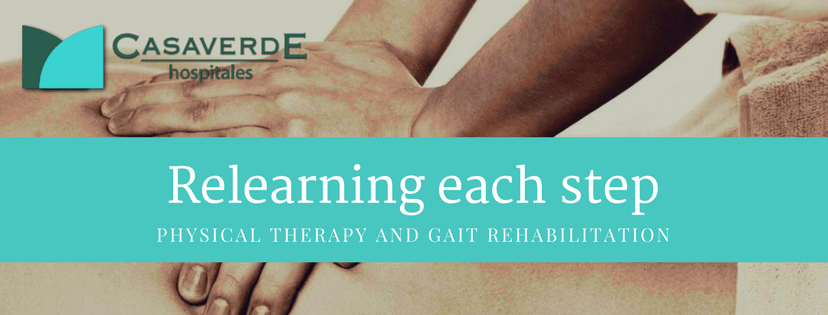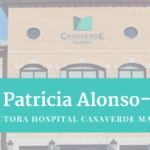RELEARNING EACH STEP AFTER BRAIN DAMAGE

From its birth, the human being is in a constant state of learning, developing and perfecting over the course of time numerous motor activities. These activities, for a healthy adult are not a great effort, but this changes when a patient has a neurological affection and must learn all those activities that had become routine, simple and that did not require special attention.
In order to carry out a satisfactory and complete treatment to a patient with brain damage we need a work team of rehabilitation that includes the greatest number of competences, as happens in the Casaverde Alicante Hospital. This team, formed by a neurologist, rehabilitator, general practitioner, psychologists, neuropsychologists, speech therapists, occupational therapists, physiotherapists, nurses and social workers, looks for the recovery of the lost function, the reduction of disability and the improvement of quality of life of the patient.
One of the consequences of the brain damage that we usually find is the alteration or inability to perform the gait, and the role of the physiotherapist is essential for the patient’s recovery. The march is a fundamental activity of the daily life and in the neurorehabilitation centres, one of the essential objectives is to restore or to retrain the pattern of the march, which will provide to the user a greater independence and well-being.
The human locomotion is characterized by an alternation of double support and unipodal support, that is to say, during the march the support never leaves the ground and is in development until 7-8 years and, until 15 years, some characteristics are improved. Normally, the march is an automatic activity and when we do it we do not usually pay attention. That’s why the centres of the Central Nervous System, responsible for human locomotion, are activated. However, when the Central Nervous System has suffered an alteration due to illness or injury, we find that the basic movements of the extremities differ significantly from those of normal locomotion.
It is clear that walking is not a simple activity when it is needed to relearn it, and that’s why it is essential to achieve series of requirements. If it was done in another way, the combination of abnormal movements that appear after the injury could be learned by repetition and it would be a very complicated challenge to change it later.
In a patient with hemiplegia, before starting to re-educate the march, he/she should be able to carry weight on the affected leg. In turn, it is absolutely necessary for the patient to be able to take a step by his/her own, and that, with the appropriate assistance he/she can walk without increasing excessively his/her hypertonia excessively, and without fear.
Currently, we have the technology on our part, providing us tools to work in neurorehabilitation and whose numerous benefits are increasingly evident. In recent years, the therapeutic importance of the treadmill training with partial support of the corporal weight has been highlighted in patients who have suffered a cerebrovascular accident. In the Casaverde Alicante Hospital we have this training system, which is composed of a mobile platform of bearing and a support that allows the partial discharge of the corporal weight, through a harness that fits on the body.
This tool has a manual support bar that will be used only in case of need. The speed and the slope are modifiable. It has a software with various training schemes that can be customized and a screen where you can perform visual exercises. Without a doubt, it is a great tool that helps in the rehabilitation of the patient. However, it is not necessary to have these tools to carry out the rehabilitation of a patient, but a good professional team to guide and support the patient through each phase of his recovery.
In any case, either through the use of the latest technologies or rehabilitating strategies already known, the ultimate goal will always be the same, to achieve the greatest possible recovery to increase the level of independence of the patient and, as a last resort, a good quality of life.


